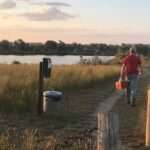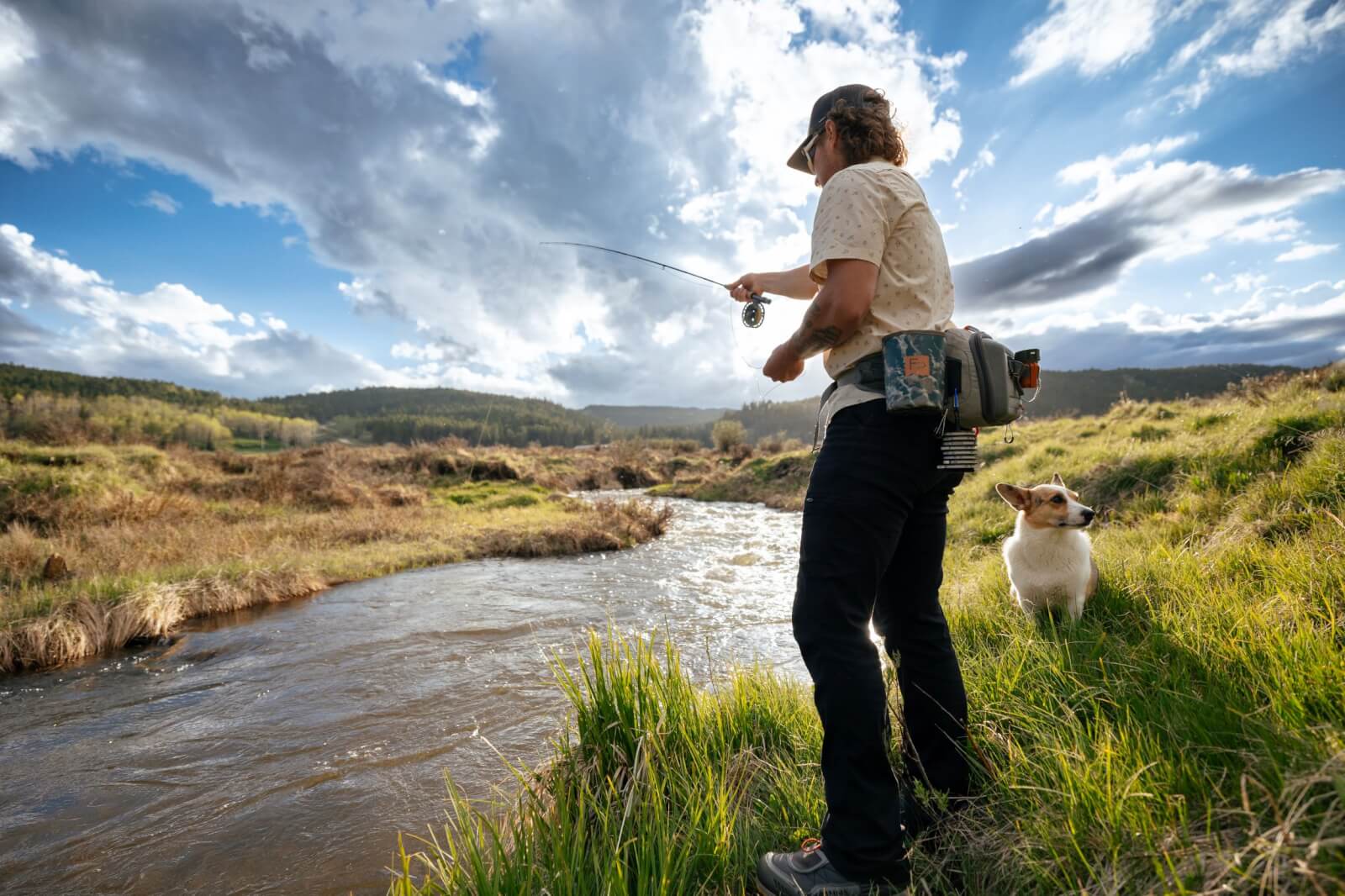
Fishing in the Bighorn Mountains
Johnson County is a great destination for anglers with a mix of mountain streams, alpine lakes, and larger bodies of water such as Lake DeSmet. Our most popular fishing waters are undoubtedly within the Bighorn National Forest. A variety of trout, grayling, mountain whitefish, and even the elusive golden trout can be found in the high mountain streams and lakes that dot the massive forest.
For those seeking easily accessible spots, Tie Hack Reservoir, Healy Reservoir, and Muddy Guard 1 and 2 offer excellent fishing opportunities just a short drive from Buffalo.
Whether you’re looking for easy-to-reach fishing spots or more challenging backcountry locations, Buffalo’s U.S. Forest Service office can provide maps and personalized recommendations based on your interests and experience level.
For additional planning resources, check out Wyoming Outdoor Recreation’s Wondermap and the Wyoming Game & Fish Department’s interactive fishing guide.
Wyoming Fishing Details On & Off the Bighorn Mountains
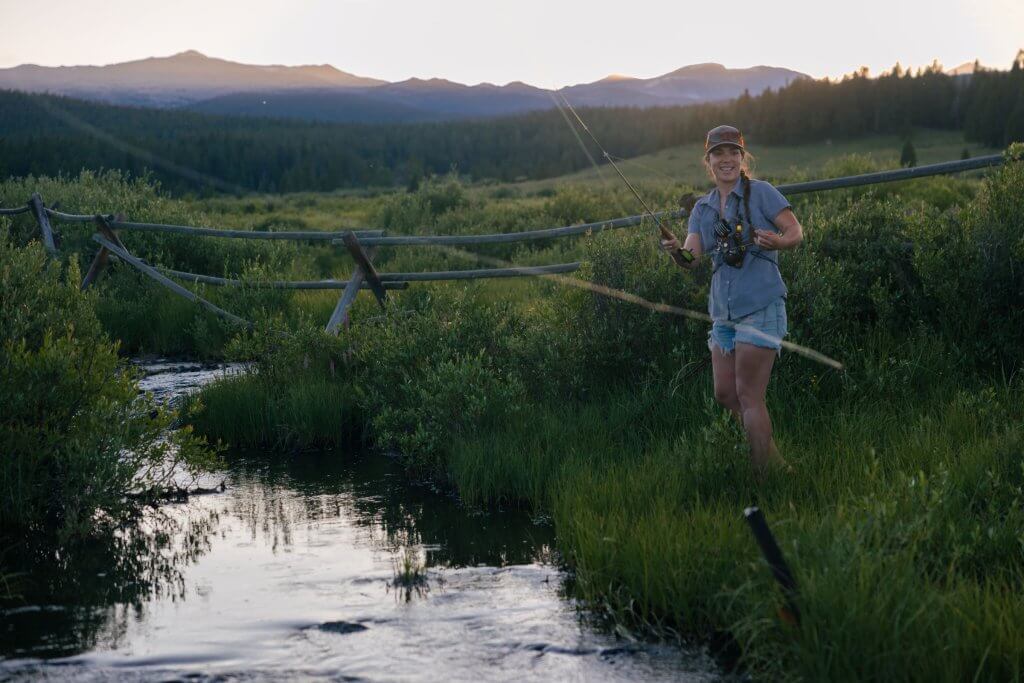
Johnson County offers diverse fishing opportunities that create memorable experiences for anglers of all skill levels. From trout-rich mountain streams and lakes in the Bighorns to serene fishing spots in the rolling plains below, you’ll find the perfect setting for your next fishing adventure.
Before casting your line, be sure to review the current Wyoming Fishing Regulations on the Wyoming Game & Fish website.
What Fish You Can Catch in the Bighorns?
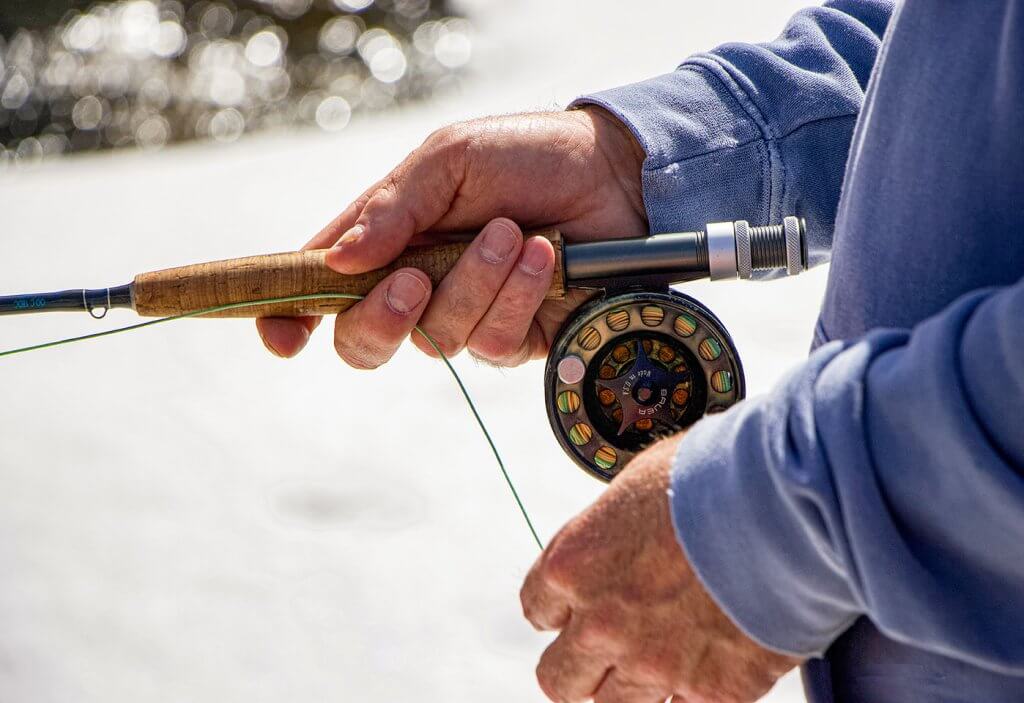
The Bighorns are home to 10 species of trout, including the elusive golden trout. In the lower-elevation lakes and reservoirs, you’ll find other species like tiger muskie, walleye, and Kokanee salmon, which are regularly stocked by Wyoming Game & Fish.
Types of Trout in the Bighorns
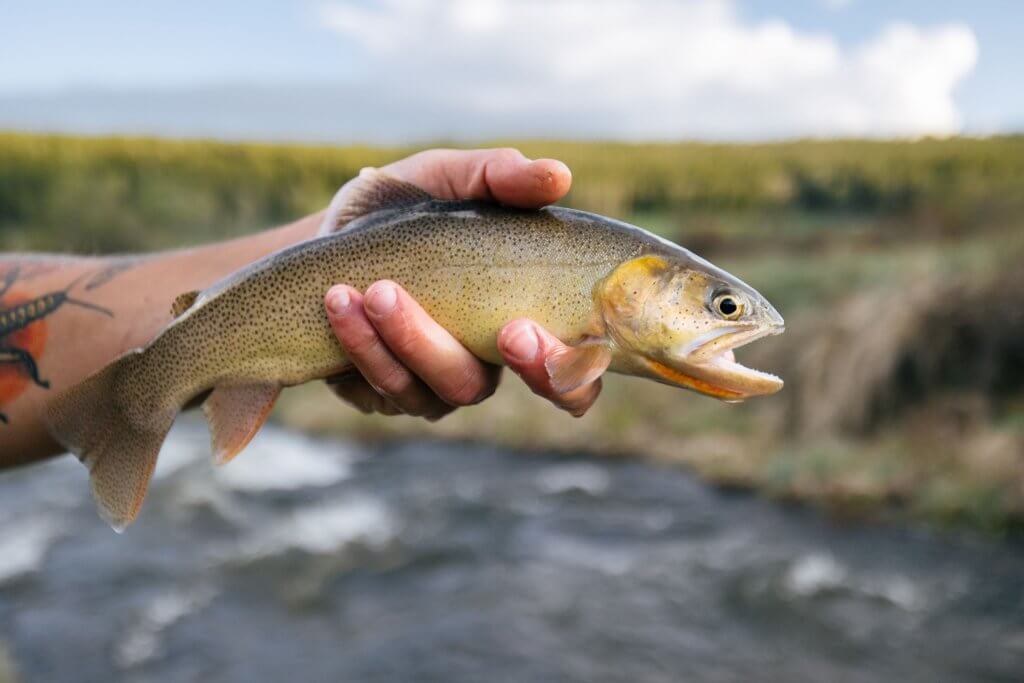
The Bighorn Mountains are home to a variety of trout species:
- Brown Trout: Can be found in most of the reservoirs and streams feeding into and out throughout the Bighorn Mountains. They are few are far between, but anglers can find large nocturnal browns in the smaller mountain streams where there are deeper pools and large underneath cutbacks. Browns can be identified with black and red spots along the side with the skin being a light tan to brown background.
- Rainbow Trout: A trout that is very common in most of the reservoirs and lakes in the Bighorn Mountains. They usually have a red band going down the side of the fish where their lateral line is. Black spots cover the skin and usually a white tip on their pelvic and back fin.
- Snake River Cutthroat Trout: The Bighorns are home to two different flavors of cutthroat trout. The Snake River cutthroat trout has a recognizable orange slash under the lower jaw. The best way to identify them is to recognize their black dots look more like small freckles that get closer to the caudal fin.
- Yellowstone Cutthroat Trout: The truly indigenous species of trout that is native to the Bighorn mountains and stocked in many of the lakes in the Cloud Peak Wilderness. Other than the orange slash, the distinctive difference between Snake River and Yellowstone is the black dots that resemble more like moles that are bigger and more spaced apart.
- Arctic Grayling: They call Willow Lake and a couple of miles downstream on Oliver Creek home in the Cloud Peak Wilderness. They have very small mouths but have beautiful and at times turquoise dorsal fins. Some black spots behind the gills with a super deep forked tail.
- Brook Trout: The most abundant trout species that you will find in the Bighorn’s streams and lakes. They are identified with red dots with blue rings called halos around the dots that run along the side of the fish. Following their spine, they will have tiger stripes called vermiculation.
- Lake Trout: The potentially biggest trout species in the Bighorn National Forest and Cloud Peak Wilderness. They prefer waters with deeper depths and can live a very long time. Lake trout can be identified with a dark green skin background with light-colored spots. They also have a very deep forked tail.
- Splake Trout: A hybrid of a male brook trout and a female lake trout. They are used as biological control in lakes and reservoirs where other species are overpopulated. Once they die, splake trout are sterile so they are no longer in the water system. The best way to identify the difference between a splake and a lake trout is that the tail is only slightly forked whereas the lake trout is deeply forked and the brook trout has a squared-off tail.
- Tiger Trout: Another biological control hybrid from a female brown trout and a male brook trout. Once a tiger trout becomes large enough to convert from eating insects to other fish species, they become a piscivore. They cannot reproduce and do not live very long but they can grow fast with a vicious attitude. Usually have pronounced vermiculation throughout their body of lighter colors on a darker skin background.
- Golden Trout: A highly prized fish by anglers that can only be found in lakes above 10,000 feet in the Cloud Peak Wilderness. At times they can be very particular and challenging to bring to a net. They have a very yellow to golden skin background, a red slash down the lateral line, and a few darker spots condensing to the tail fin.
More Types of Fish in the Bighorns
- Mountain White Fish: Another native fish species that is located in the Tongue River watershed and streams to the north. They have a small mouth and fine scales. Look for their adipose fin to differentiate from suckers.
- Tiger Muskie: A hybrid between a muskellunge and a northern pike. Known to be stocked in Healy Reservoir, they can grow to very impressive sizes. With large heads and long snakelike bodies, the tiger muskie will have dark stripes throughout the length of the body on a light background.
- Bass: Largemouth bass are also in Healy Reservoir and commonly stocked in private ponds off of the Bighorn Mountains. The main difference between largemouth and smallmouth bass is that largemouth have their eyes behind their mouth and jaws whereas smallmouth eyes are above the jaws.
- Walleye: Also stocked in Healy Reservoir with an established population in Lake DeSmet. A very common game fish species for human consumption. They have a long-elongated body with a large eye. Their scales are brassy in color.
- Sauger: Similar to their cousins’ walleye, they have more of a silver-mottled colored body. They are native to the Powder River drainage. Pretty rare to bring to the net.
- Yellow Perch: In the same family as the walleye and sauger, but yellow perch have more of a compressed body with dark vertical bands on top of a yellow to olive background. They can be found in bodies of water like Healy and Lake DeSmet.
- Kokanee Salmon: Heavily stocked in Lake DeSmet, Kokanee is a very popular fish for anglers to catch and keep for the smoker. Usually pretty silver in color, both males and females will turn red during spawning in the fall.
Fishing Licenses
Purchase your fishing license and conservation stamp at the Sports Lure, downtown Buffalo. They’ll also give tips on the best places to fish and what they’re biting on. Be sure to grab a copy of the Game and Fish Regulations so you know the laws and updated regulations. It’s up to you to fish legally. You can also buy your Johnson County fishing license online on your phone, which can be saved on your device. Your license must be on you at all times while out in the field, even if on private property.
Where to Receive Maps & Fishing Information
For essential fishing resources, contact:
- Bureau of Land Management (BLM): 307-684-1100
- Forest Service: 307-684-7806
- The Sports Lure: 307-684-7682
Local Resources
State Resources
Interactive Maps
Places to Go Fishing In & Around The Bighorn Mountains
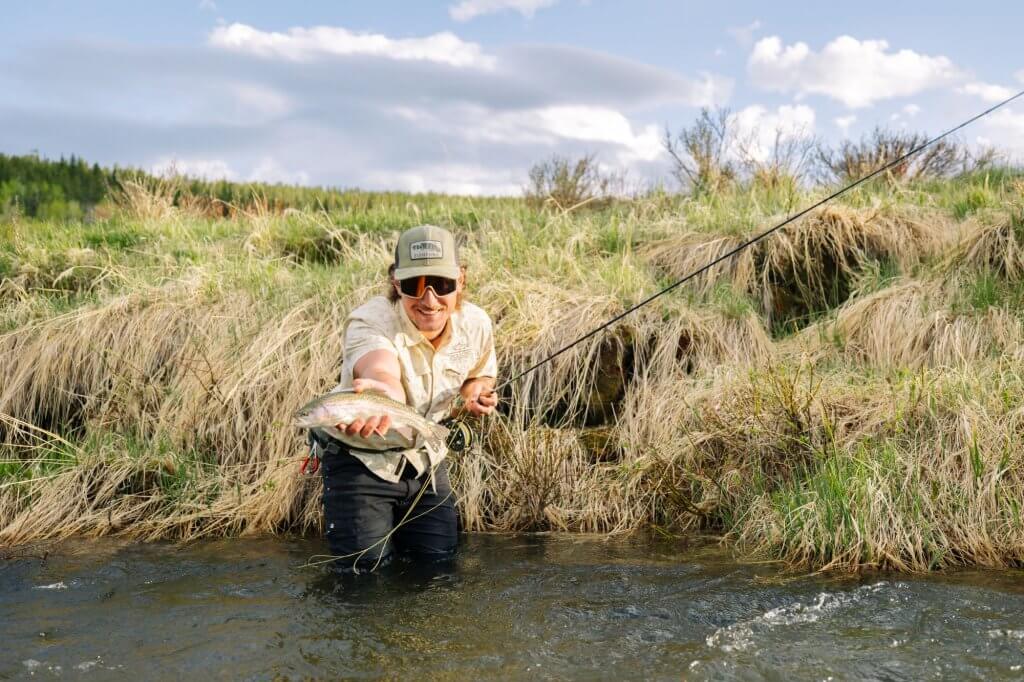
The Bighorn Mountains offer excellent fishing near Buffalo, WY, from alpine lakes to rushing streams. These popular fishing spots provide year-round adventures for every skill level, with abundant access points for catching trout.
From the Mosier Gulch area to Tie Hack Reservoir, Clear Creek is filled with browns, rainbows, and brook trout. Anglers can also try their luck at the trophy fisheries like the Muddy Guard Reservoirs in the foothills.
Popular Fishing Access Points Near Buffalo
Just minutes from downtown Buffalo along Highway 16, Clear Creek’s pristine waters thread through the landscape, offering some of the area’s most accessible fishing opportunities. Whether you’re a local or just passing through, here’s your guide to the best roadside fishing.
Lake DeSmet
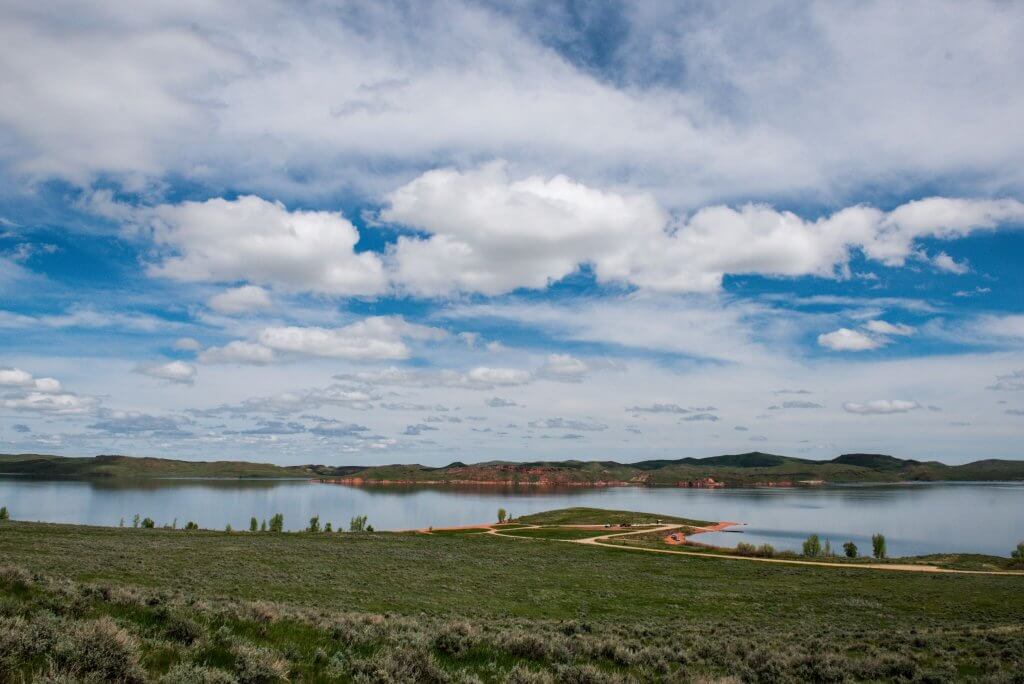
A very large, cold, and clear body of water that hosts a large variety of game fish. The surface area of the lake is nearly 3,600 acres with depths of up to 120 feet. Frequently caught fish from the bank or by boat are browns, rainbows, walleye, and yellow perch. However, other species like Kokanee salmon, rock bass, lake trout, and Yellowstone cutthroat can be angled. Lake DeSmet is a great place for fishing from shore and boating recreation. Rainbows average 12 to 20 inches.
There are multiple places for boat launch access – one at Mikesell-Potts, a county-managed recreation area; and another at Monument Point, which is managed by the Wyoming Game & Fish Department. Located right off Interstate 90 north of Buffalo, this area is extremely popular for boating and swimming in the summer. Lake DeSmet is the location for a spring fishing derby in late May and a winter ice fishing derby in mid-February.
Tie Hack Reservoir
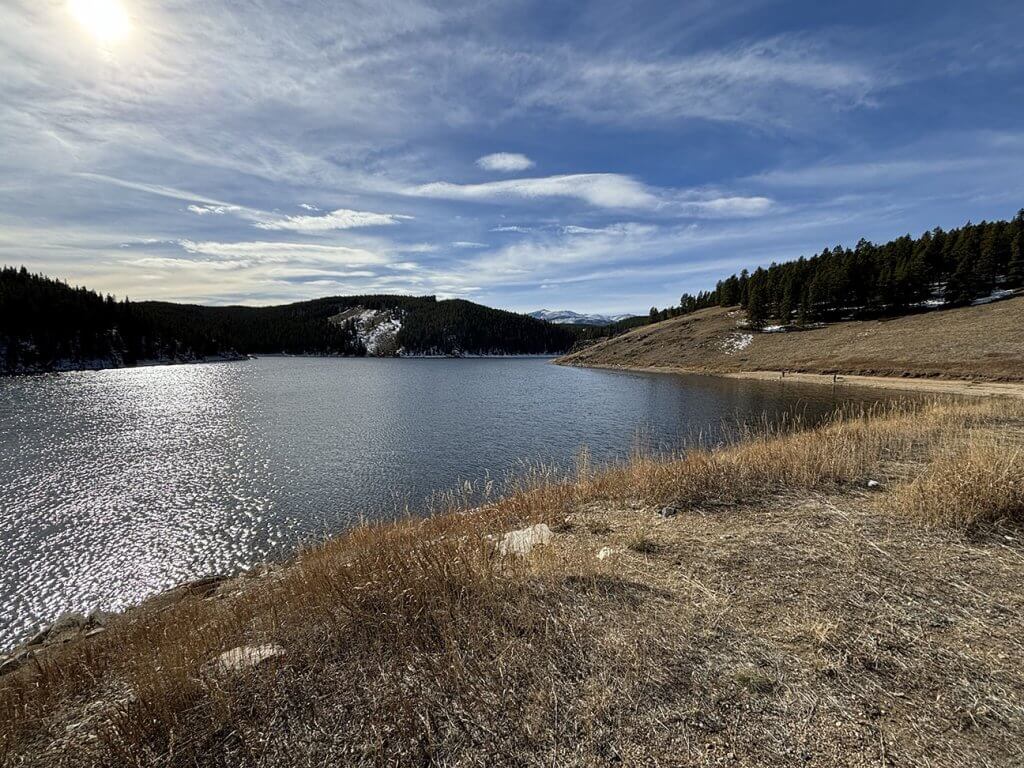
12 miles west on Hwy 16. Constructed in 1997, this popular destination for visitors and residents alike offers fishing, camping, hiking, and even boating.
Muddy Guard Reservoir 1
Considered and managed by the Wyoming Game and Fish as a “Trophy Fishery, this reservoir is 36 acres. It has a strictly enforced creel limit of one fish per day of over 20 inches for anglers choosing to keep their catch. Any trout below that size has to be released back into the water immediately. Only artificial flies and lures are allowed; no live bait. Common species of trout that reside here are rainbow, snake river cutthroat, tiger trout, brook trout, and brown trout.
Only boats with less than 15 horsepower are allowed. There is no boat ramp but the banks are not steep.
Muddy Guard Reservoir 2
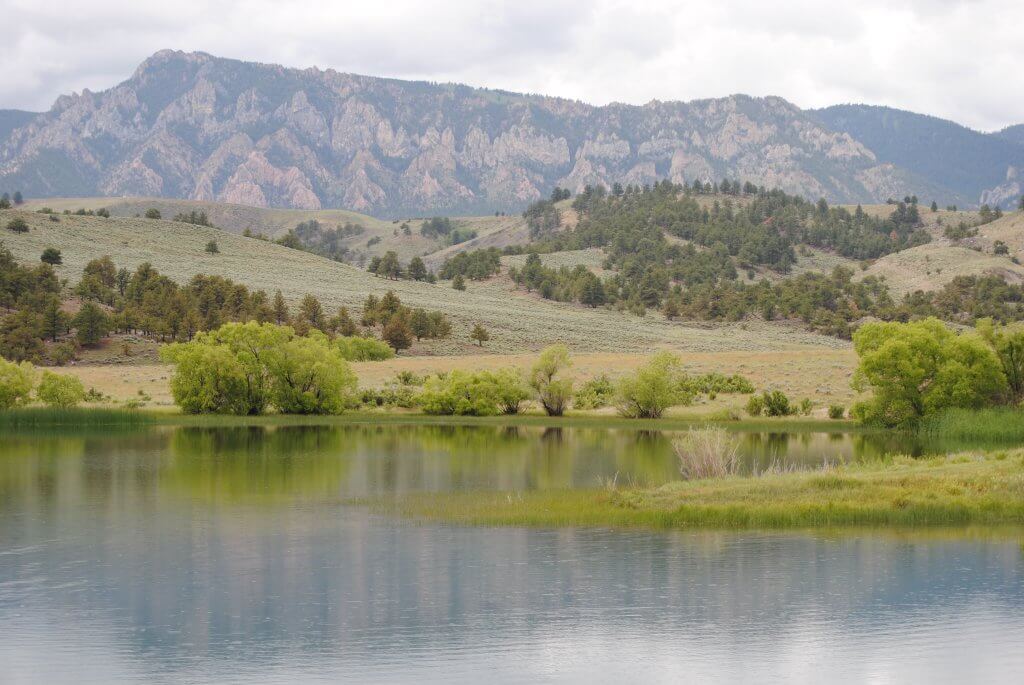
This deeper reservoir is home to some pretty massive brown trout that are rare but do reside here. They tend to stay in deep water until late August. Other common species to catch are tiger trout and rainbows. Boats with less than 15 horsepower are allowed, but there is no boat ramp.
Healy Reservoir
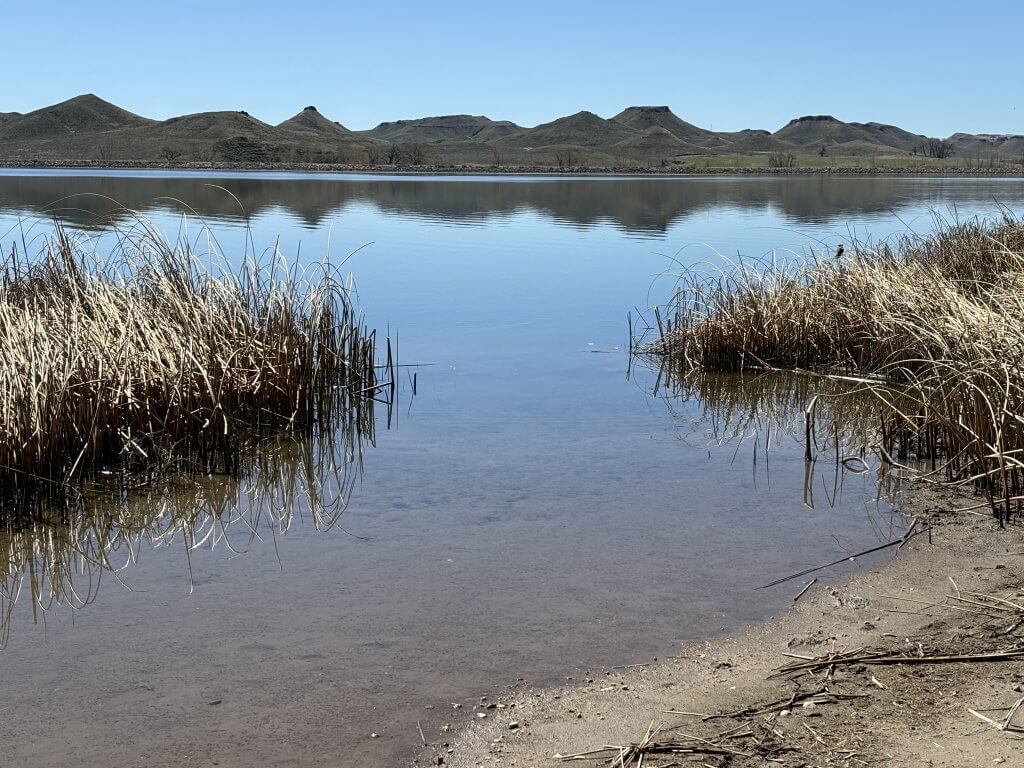
Located just 5 miles east of Buffalo on Highway 16, Healy is easy to reach and thus a popular spot. The reservoir is approximately 215 acres in size and offers exceptional fishing for yellow perch, tiger musky, largemouth bass, and other species like rainbow trout, brook trout, brown trout, Snake River cutthroat, and stonecat. Rainbow and cutthroat trout average 10 to 18 inches.
The reservoir is managed by the Wyoming Game & Fish Department. Amenities include a graveled parking lot, comfort station, concrete boat ramp, boat dock, and an additional primitive boat ramp. No camping is allowed, nor are fireworks or fires. No motorboats over 15 horsepower are allowed.
This is a great location for ice fishing, but no driving on ice is allowed.
North and South Fork Sayles Creek Ponds
Located in the Bud Love Wildlife Management Habitat Area are five man-made ponds stocked with brook or rainbow trout averaging 6 to 10 inches. Brook trout and rainbow trout are the most common.
This area located northwest of Buffalo is closed for people from mid-November through the end of April. Limited camping is available.
Clear Creek
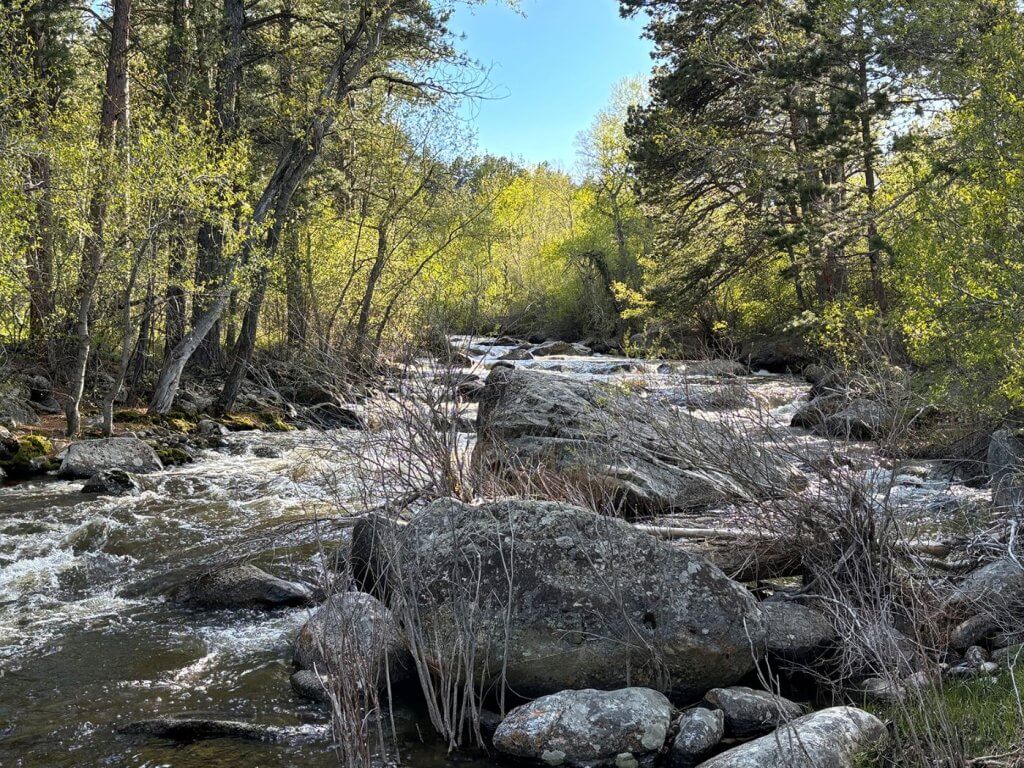
Running right through downtown Buffalo, Clear Creek is traditionally where the town’s younger folk fish are. It can be accessed along an extensive trail system that runs for miles from the South Bypass through downtown to the base of Grouse Mountain.
How to Reach the Top Fishing Spots Near the Bighorn Mountains
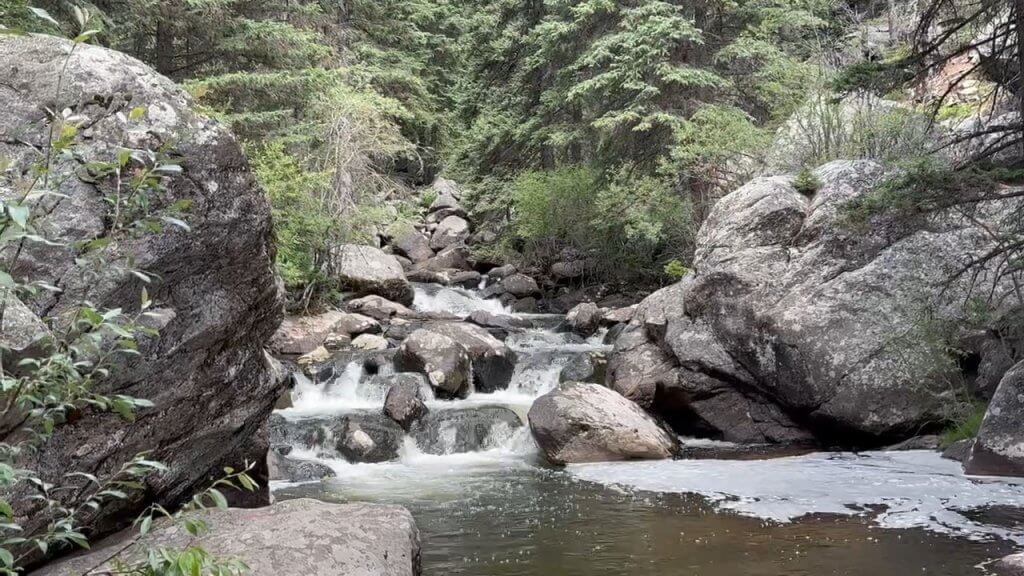
THE MOUNTAINS
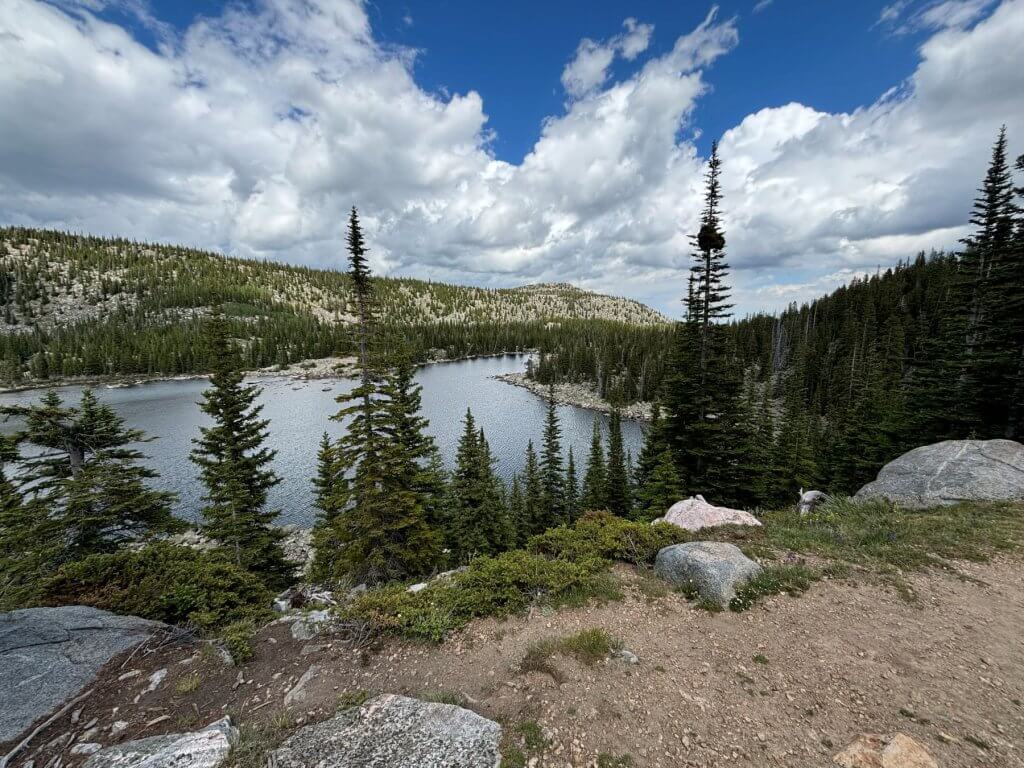
The general rule of thumb for fishing in the Bighorn Mountains and Cloud Peak Wilderness is that the farther you go, the better the fishing. Determined backpackers are often rewarded with solitude and excellent fishing. Here are some top locations:
- North Fork Clear Creek: Brook trout (4-8 inches) and rainbow trout (8-10 inches).
- Middle Fork Clear Creek: Rainbow trout (8-10 inches). Campground with toilets, drinking water, and space for trailers.
- South Fork Clear Creek: Brook, brown, and rainbow trout.
- Tie Hack Dam and Reservoir: Rainbow, brook, and large brown trout. Great for kayaking and canoeing.
- Sherd Lake and Willow Lake: Cutthroat trout (6-14 inches) and splake/grayling (7-12 inches). Hikes required.
- North Fork Crazy Woman Creek: Brook trout (4-8 inches). Amazing canyon scenery.
- North Fork Powder River: Smart brown and rainbow trout (8-10 inches).
- Doyle Creek: Brook trout (4-8 inches) and rainbow trout (8-12 inches). High elevation.
- Dull Knife Reservoir: Brown and rainbow trout (8-12 inches).
- Beartrap Creek: Brook trout (4-8 inches). No services or camping.
- Golden Lakes: Golden trout (8-9 inches). A steep hike is required.
Other Mountain Lakes
A variety of trout species can be found in the following lakes:
- Seven Brothers Lakes
- Lower Frozen Lakes 1
- Lake Angeline
- Lost Twin Lakes
- Lame Deer Lake
- Firehole Lakes 1 & 2
- Old Crow Lake
- Her Lake
- Ringbone Lake
- South Fork Ponds
- Trigger Lake
- Magdalene Lake
- Brown Bear Lake
- Maybelle Lake
- Florence Lake
Red Grade Road/Forest Road 26 Region
Various lakes and reservoirs contain different trout species. Notable bodies include:
- Park Reservoir
- East Fork Big Goose Creek
- Martin Reservoir
- Last Chance Reservoir
- Geddes Lake
- Highland Lake
- Lake Mirage
- Lake Buffalo
- Peggy Lake
- Spear Lake
- Lake Shamrock
- Myrtle Lake
- Golden Lake
- Hope Lake
- Loomis Lake
- Lost Wilderness Lake
- Bard Lake
- McClain Lake
- Willow Park Reservoir
- Frying Pan Lake
- Deep Lake
- Flatiron Lake 1
- Cloud Peak Reservoir
- Lake Mead
- South Piney Lakes
KAYCEE AREA
- Middle Fork Powder River: Brown trout (10-16 inches) and rainbow trout (8-16 inches). Only artificial flies or lures. Spring is best, but roads may be muddy. The area closed from the end of the year into spring.
- Blue Creek: Brook and brown trout. Open year-round with beautiful surroundings.
Navigate Trailheads & Access Points for Places to Fish
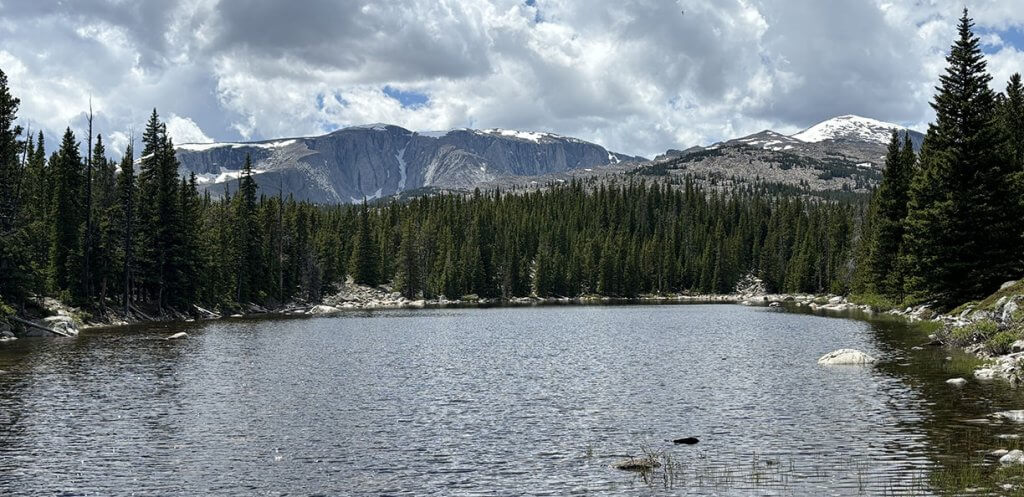
Circle Park Trailhead (FS Road 20, 13 miles west on Hwy 16)
- Sherd Lake: 1.8 miles
- Rainy Lake: 6 miles
- Willow Lake: 8 miles
Hunter Trailhead (FS Road 19, 12 miles west on Hwy 16)
- Seven Brothers Lakes: 8 miles
- Florence Pass/Bomber Mountain: Long, gradual hike; historic monument and military bomber wreckage from 1943
Schoolhouse Park Trailhead (12.5 miles west on Hwy 16)
- Lake Angeline: High alpine lake with a slightly challenging hike; offers beautiful views and clear water.
Plan Your Bighorn Mountain Fishing Adventure
Start your journey at the U.S. Forest Service Powder River Ranger District. Contact them at 307-684-7806 for maps, regulations, and expert tips.
Bighorn Mountains Fishing Report

The best way to get updates is by calling or visiting shops like The Sports Lure and talking to the local experts.
“The Bighorn Mountains really start to pick up fishing in mid-June as the snowpack line recedes with the warmer coming summer temperatures. Usually, by the second week of July, the high alpine lakes are almost completely iced off and accessible to hikers. Grasshoppers find their way to the higher elevations in August, and these trout know that the summer feeding season is short. They are eager to eat those grasshoppers. Snow can fly by the start of September, but it usually quickly melts, and the fish are still in the feeding mode to October.”
— Seth Carrel, Spear-O-Wigwam
